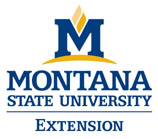 |
|
|
 |
Skiing against a backdrop of snowcapped mountains or hiking through colorful alpine meadows on clear, blue-sky days are defining images for ski areas in Colorado and around the world. Such images help draw millions of people to ski areas for winter and summer recreation, which generates over $3.6 billion in revenue in the U.S. alone. To preserve the integrity of these images, we must understand and reduce the impacts of ski areas on resource consumption and environmental quality. The purpose of this handbook is twofold:
Aspen Skiing Company and Arapahoe Basin were chosen to participate in the project to understand and evaluate mountain operation from a practical standpoint. The handbook is organized according to operational areas. However, the environmental strategies discussed in each chapter are multimedia; that is, they address source reduction, energy efficiency, solid and hazardous waste minimization, and air emission reduction. In addition, the handbook contains numerous case studies. The complete manual can be viewed here in pdf format (Table of Contents). Hard copies of the handbook and training information can be obtained by contacting: Kirk Mills,
Colorado Department of Public Health |
|
 |
||
 |
||
 |
||
 |
||
 |
Sponsors: The handbook grew out of an effort by Colorado Department of Public Health and Environment (CDPHE) to initiate discussions with ski area representatives about proactive strategies for improving regulatory compliance, reducing wastes, and conserving natural resources. These discussions ultimately led to the development of a project involving Colorado ski areas, funded by the U.S. Environmental Protection Agency (EPA), and contracted to Tetra Tech EM Inc. (Tetra Tech) for project implementation. The National Ski Areas Association (NSAA) was helpful in providing a national perspective for the project and in communicating project information to its membership. Numerous other organizations and individuals contributed to the project and are listed in the acknowledgments section.


